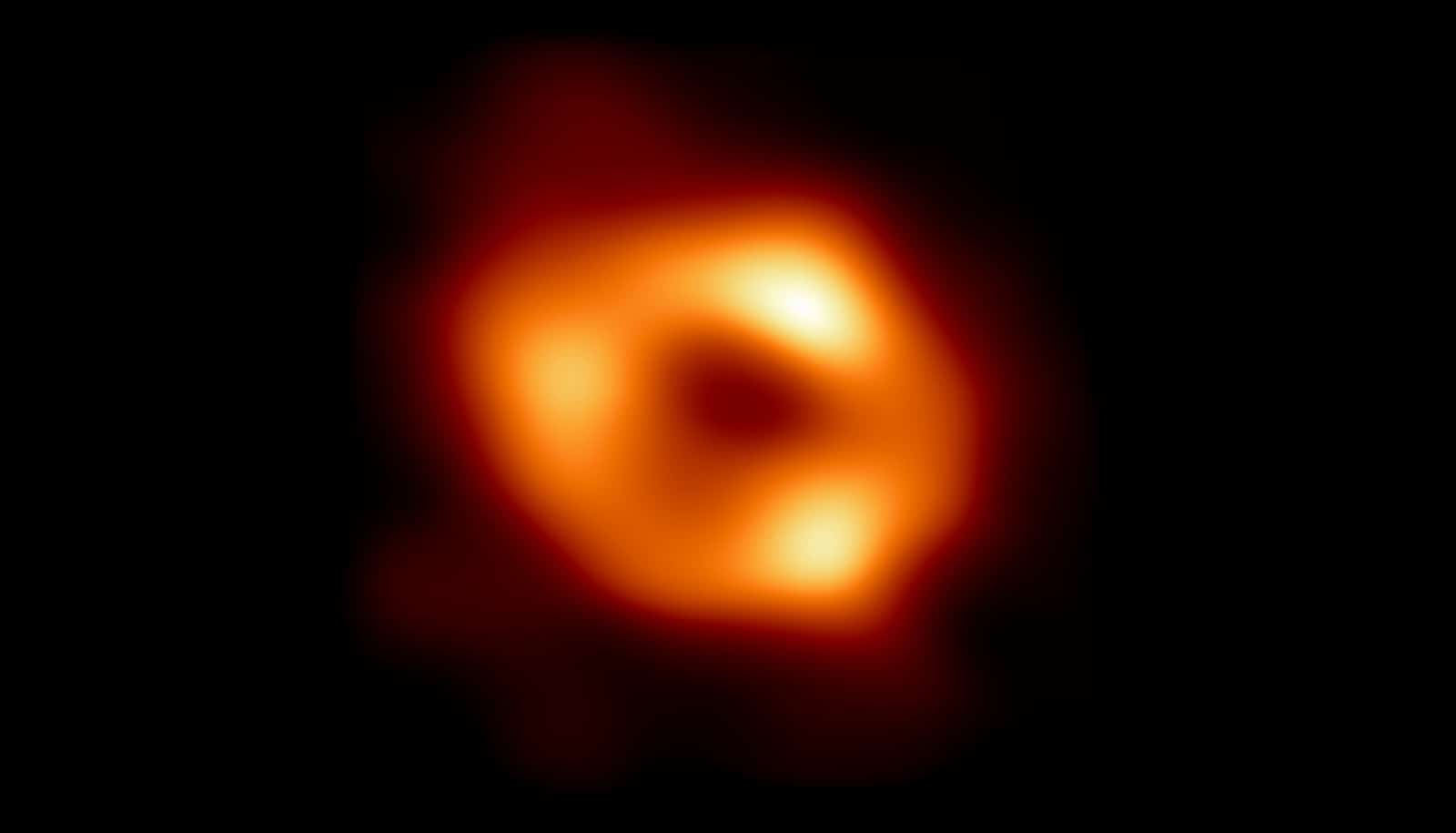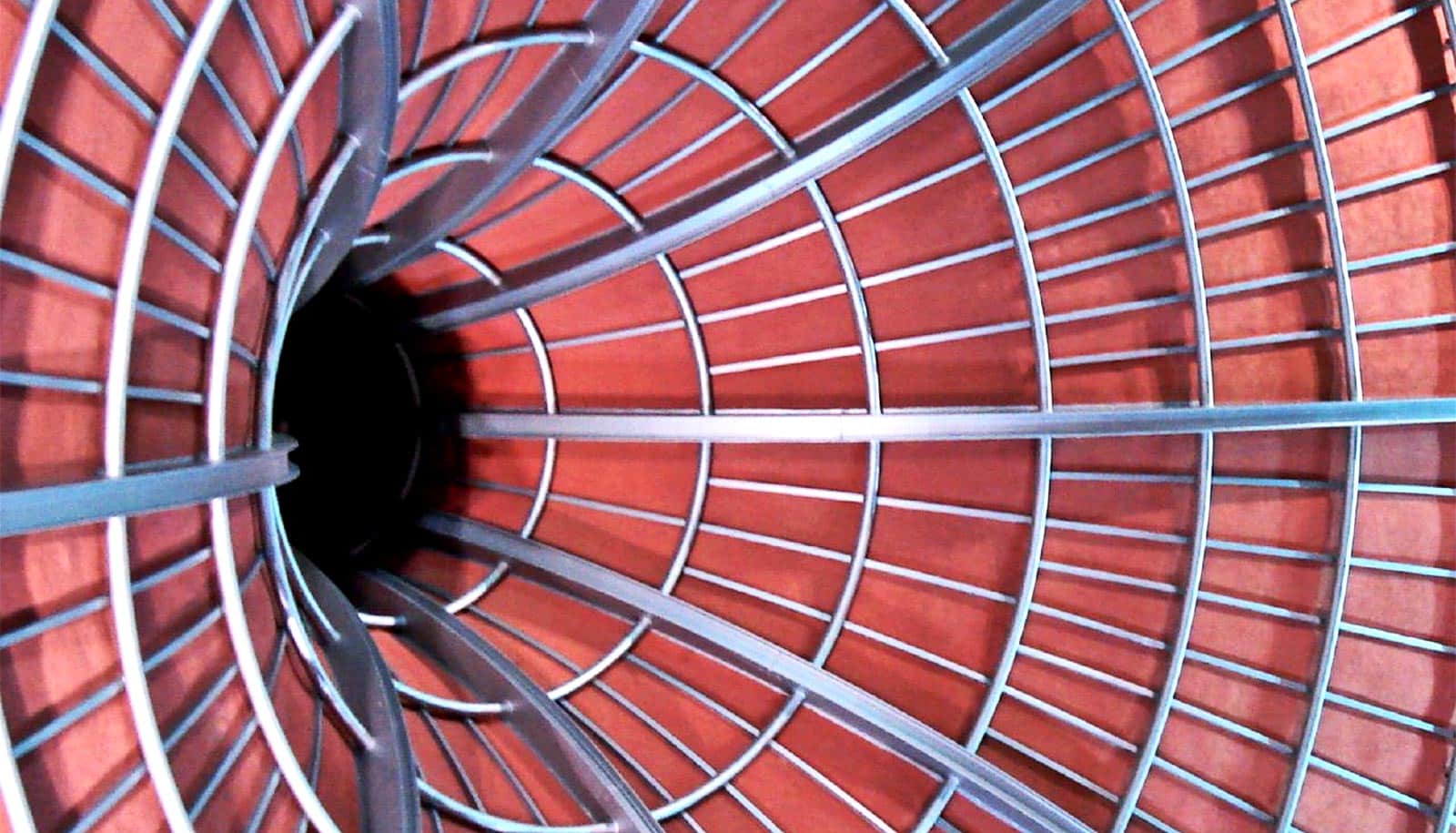
This image of Sagittarius A* is the first direct visual evidence of the presence of a supermassive black hole at the center of our galaxy. It was captured by the Event Horizon Telescope, an array of radio telescopes named after the "event horizon," the boundary of the black hole beyond which no light can escape. (Credit: EHT Collaboration)
This is the first image of the black hole at our galaxy’s center
Researchers have shared the very first image of the black hole at the center of our galaxy, the Milky Way. Meet Sagittarius A*.
Astronomers have unveiled the first image of the supermassive black hole at the center of our own Milky Way galaxy.
This result provides overwhelming evidence that the object is indeed a black hole and yields valuable clues about the workings of such giants, which are thought to reside at the center of most galaxies.
A global research team called the Event Horizon Telescope Collaboration produced the image using observations from a worldwide network of radio telescopes.
“We were stunned by how well the size of the ring agreed with predictions from Einstein’s theory of general relativity.”
The image is a long-anticipated look at the massive object that sits at the very center of our galaxy . Scientists had previously seen stars orbiting around something invisible, compact, and very massive at the center of the Milky Way. This strongly suggested that the object—known as Sagittarius A*, or Sgr A* (pronounced “sadge-ay-star”)—is a black hole, and the new image provides the first direct visual evidence of it.
Although we cannot see the black hole itself, because it is completely dark, glowing gas around it reveals a telltale signature: a dark central region called a “shadow,” surrounded by a bright ringlike structure. The new view captures light bent by the powerful gravity of the black hole, which is 4 million times more massive than the sun.
“We were stunned by how well the size of the ring agreed with predictions from Einstein’s theory of general relativity,” says EHT project scientist Geoffrey Bower from the Institute of Astronomy and Astrophysics at Academia Sinica in Taipei, Taiwan. “These unprecedented observations have greatly improved our understanding of what happens at the very center of our galaxy and offer new insights on how these giant black holes interact with their surroundings.”
The EHT team’s results appear in The Astrophysical Journal Letters .
Planet-sized telescope
Because the black hole is about 27,000 light-years away from Earth, it appears to us to have about the same size in the sky as a donut on the moon. To image it, the team created the powerful EHT, which linked together eight existing radio observatories across the planet to form a single “Earth-sized” virtual telescope. The EHT observed Sgr A* on multiple nights, collecting data for many hours in a row, similar to using a long exposure time on a camera.
The Sgr A* image breakthrough follows the EHT Collaboration’s 2019 release of the first image of a black hole, called M87*, at the center of the more distant Messier 87 galaxy.
The two black holes look remarkably similar, even though our galaxy’s black hole is more than 1,000 times smaller and less massive than M87*.
“…the brightness and pattern of the gas around Sgr A* was changing rapidly as the EHT Collaboration was observing it—a bit like trying to take a clear picture of a puppy quickly chasing its tail.”
“We have two completely different types of galaxies and two very different black hole masses, but close to the edge of these black holes they look amazingly similar,” says Sera Markoff, co-chair of the EHT Science Council and a professor of theoretical astrophysics at the University of Amsterdam in the Netherlands. “This tells us that general relativity governs these objects up close, and any differences we see further away must be due to differences in the material that surrounds the black holes.”
This achievement was considerably more difficult than for M87*, even though Sgr A* is much closer to us, explains Chi-kwan “CK” Chan, an associate research professor at the University of Arizona’s Steward Observatory.
“The gas in the vicinity of the black holes moves at the same speed—nearly as fast as light—around both Sgr A* and M87*,” he says. “But where gas takes days to weeks to orbit the larger M87*, in the much smaller Sgr A* it completes an orbit in mere minutes. This means the brightness and pattern of the gas around Sgr A* was changing rapidly as the EHT Collaboration was observing it—a bit like trying to take a clear picture of a puppy quickly chasing its tail.”
The researchers had to develop sophisticated new tools that accounted for the gas movement around Sgr A*. While M87* was an easier, steadier target, with nearly all images looking the same, that was not the case for Sgr A*. The image of the Sgr A* black hole is an average of the different images the team extracted, finally revealing the giant lurking at the center of our galaxy for the first time.
The effort was made possible through the ingenuity of more than 300 researchers from 80 institutes around the world that together make up the EHT Collaboration. In addition to developing complex tools to overcome the challenges of imaging Sgr A*, the team worked rigorously for five years, using supercomputers to combine and analyze data, all while compiling an unprecedented library of simulated black holes to compare with the observations.
Compare and contrast
Scientists are particularly excited to finally have images of two black holes of very different sizes, which offers the opportunity to understand how they compare and contrast. They have also begun to use the new data to test theories and models of how gas behaves around supermassive black holes. This process is not yet fully understood but is thought to play a key role in shaping the formation and evolution of galaxies.
“Now we can study the differences between these two supermassive black holes to gain valuable new clues about how this important process works,” says EHT scientist Keiichi Asada from the Institute of Astronomy and Astrophysics at Academia Sinica in Taipei, Taiwan. “We have images for two black holes—one at the large end and one at the small end of supermassive black holes in the universe—so we can go a lot further in testing how gravity behaves in these extreme environments than ever before.”
Progress on the EHT continues: A major observation campaign in March 2022 included more telescopes than ever before. The ongoing expansion of the EHT network and significant technological upgrades will allow scientists to share even more impressive images as well as movies of black holes in the near future.
“We’ve gotten into everything from very basic theoretical analytic models, all the way to extremely complex, large computational efforts,” says Feryal Özel, professor of astronomy and physics at the Steward Observatory. “To do this kind of work, you need new hardware, new types of algorithms, and new types of models.”
EHT is a very organic collaboration, according to Özel, with partners bringing their own expertise, resources, and telescopes in the face of limited funding.
“I can’t believe how quickly the project grew from analyzing the exciting-but-preliminary initial datasets to seeing the beautiful shadow reconstruct before our eyes,” says University of California, Santa Barbara and Las Cumbres Observatory graduate student Joseph Farah. Farah devised a new technique for producing a dynamical movie representation of the black hole Sgr A*.
“The resulting dataset will have amazing legacy value to the accretion physics community, while the image of the black hole itself is a sight to behold,” says Mark Reynolds, associate research scientist at the University of Michigan, was involved in the research as part of the multi-wavelength team, a group of scientists making observations at multiple wavelengths, such as radio, infrared, X-ray and gamma ray.
“To take part in this historic EHT campaign and unveil the supermassive black hole in our galactic backyard—Sgr A*—is an amazing scientific achievement and a great testament to the brilliance of the human mind.”
Source: University of Arizona , UC Santa Barbara , University of Michigan
The post This is the first image of the black hole at our galaxy’s center appeared first on Futurity .
Share this article:
This article uses material from the Futurity article, and is licenced under a CC BY-SA 4.0 International License. Images, videos and audio are available under their respective licenses.
Related Articles:
Einstein’s ideas hold up in black hole test
Aug. 8, 2019 • futurityHow do you find an ‘unseeable’ black hole?
Dec. 2, 2021 • futurityLinks/images:
- https://www.futurity.org/black-hole-milky-way-2387212/
- https://iopscience.iop.org/journal/2041-8205/page/Focus_on_First_Sgr_A_Results
- https://www.futurity.org/black-hole-image-eht-2032502-2/
- https://www.futurity.org/supermassive-black-holes-galaxies-2172672/
- https://www.futurity.org/black-hole-image-energy-jets-2537672-2/
- https://news.arizona.edu/story/uarizona-astronomers-lead-efforts-reveal-black-hole-heart-our-galaxy
- https://www.news.ucsb.edu/2022/020632/astronomers-reveal-first-image-black-hole-heart-our-galaxy
- https://news.umich.edu/u-m-scientist-part-of-group-to-reveal-first-image-of-the-black-hole-at-the-heart-of-our-galaxy/
- https://www.futurity.org/black-hole-image-milky-way-sagittarius-a-2739062/
- https://www.futurity.org


